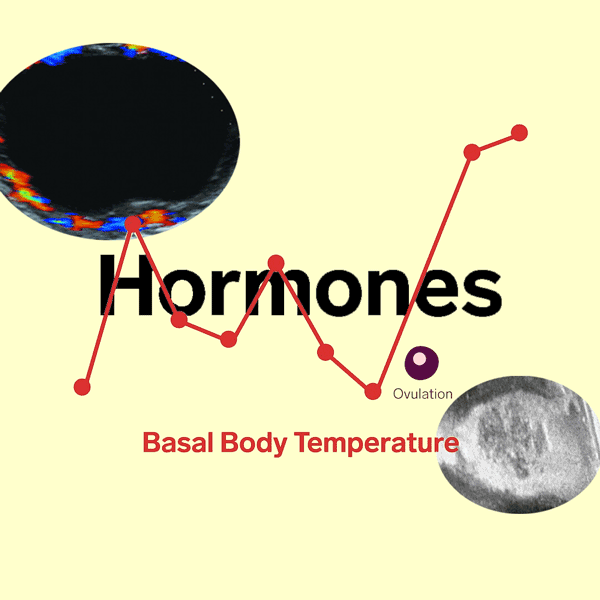Can Mare Temperature Changes Predict Ovulation?
 Temperature changes to predict ovulation are used in multiple species, including humans. The question has been asked of the mare in the past, Bowman et al. identifying a drop in temperature using a temperature-reporting microchip following ovulation which occurred in the period from midnight to 9:00 am. Diurnal fluctuations were also observed, with overnight temperatures lower, which likely related to the reason why temperature changes related to ovulation were not observed at other points in the day. No temperature change was however identified prior to ovulation, nor was any change at any time pre- or post-ovulation identified using a rectal thermometer. Those authors concluded that development of a variety of management programs may enable utilization of perfected temperature techniques, however “until that time, current methods (were) still more trustworthy and efficient”[1]. Given the improvement in temperature-sensing and computing devices since 2007, it seems reasonable that the previous findings should undergo review, which Auclair-Ronzaud et al. have done.
Temperature changes to predict ovulation are used in multiple species, including humans. The question has been asked of the mare in the past, Bowman et al. identifying a drop in temperature using a temperature-reporting microchip following ovulation which occurred in the period from midnight to 9:00 am. Diurnal fluctuations were also observed, with overnight temperatures lower, which likely related to the reason why temperature changes related to ovulation were not observed at other points in the day. No temperature change was however identified prior to ovulation, nor was any change at any time pre- or post-ovulation identified using a rectal thermometer. Those authors concluded that development of a variety of management programs may enable utilization of perfected temperature techniques, however “until that time, current methods (were) still more trustworthy and efficient”[1]. Given the improvement in temperature-sensing and computing devices since 2007, it seems reasonable that the previous findings should undergo review, which Auclair-Ronzaud et al. have done.
Using a temperature-reporting neck microchip, seven mares (two of whom were evaluated for two cycles) produced an impressive 4,780 readings over about a 6-day period surrounding ovulation (2.4±0.9 days before and 3.6±1.7 days after). The mare’s ovarian status’ were also evaluated using transrectal ultrasonography. Three periods of differentiation were used – follicular phase, when a dominant estrus follicle => 30 mm was present; ovulation day, which was the first 24 hours after the appearance of the CL; luteal phase, which was the period following the “ovulation day”, when a CL was present. The temperatures were calculated to determine a mean per half-hour for each mare. These were then used to compare using two time periods – ovulation day vs follicular phase; ovulation day vs. luteal phase; and follicular phase vs. luteal phase.
A statistically higher temperature was identified during the 4:30 to 8:00 time period in the ovulatory day when compared to the follicular phase, with a minimum difference of 0.51±0.26°C and a maximum of 0.92±0.26°C. A significantly lower temperature was seen when comparing the ovulatory day to the luteal phase, with a range of difference from approximately 0.29° to 0.6°C.
The authors concluded that temperature changes do occur around the time of ovulation, however research is required to further review, define and determine causation for the changes.
Our comment: The improvement in the microchip ability to collect and transmit temperature data has been shown to be significant. This improved ability will be beneficial, and quite likely will improve further. The paper as a whole appears to confirm the diurnal temperature variations previously identified by Bowen et al. in their earlier research, and until a calculation can be established to compensate these, the ability to use temperature changes to predict ovulation. We would also like to see further research related to changes due to ambient temperatures and if those could impact the reliability. One would presume any temperature shift associated with the ovulation would be uniform, however ambient temperature needs to be ruled out as a contributory factor.
Two months subsequent to the publication of this paper in June 2023, Epper et al. published similar research using a sensor device fixed at the left lateral thorax for over 60 hours around the time of ovulation[2]. Those authors found that “estimated body temperature in the 6 hours following ovulation detection was on average 0.06°C +/- 0.05°C (mean +/- SD) significantly higher when compared with body temperature at the same time on the preceding day”. They did however conclude that “changes in body temperature during estrus in mares were related to ovulation. The increase in body temperature immediately after ovulation might be used in the future to establish automatized and noninvasive systems to detect ovulation. However, the identified temperature rise is relatively small on average and hardly identifiable in the individual mares.”
(Auclair-Ronzaud J, Dubois C, Wimel L. 2023. Can body temperature be a tool to detect ovulation in the mare? JEVS 125:104689)
References:
1: Bowman MC, Vogelsang MM, Gibbs PG, Scott BD, Eller EM, Honnas C, Owen K. (2007). Utilizing Body Temperature to Evaluate Ovulation in Mares. The Professional Animal Scientist 23;3:267-271.
2: Epper P, Glüge S, Vidondo B, Wróbel A, Ott T, Sieme H, Kaeser R, Burger D. 2023. Increase of Body Temperature Immediately After Ovulation in Mares. JEVS 127:104565.



